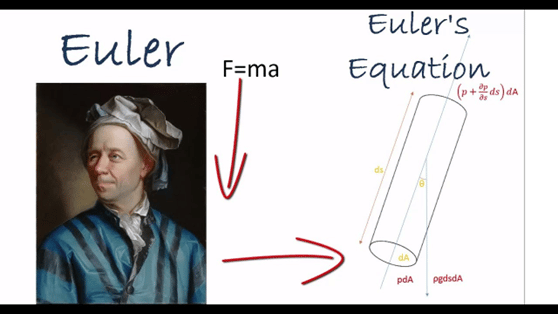Euler 250 years later – Atlantic International University
August 25, 2022 2023-09-18 21:21Euler 250 years later – Atlantic International University
Science tries in-depth to explain the phenomena that occur on our planet. Many times, it takes years to master certain concepts, and this is the case in the study of the behavior of fluids.
If we talk about fluids, we can say that they have 8 specific properties:
– Fluid properties
– Density (ρ)
– Specific volume (Vs)
– Specific gravity (γ)
– Specific Gravity (d)
– Viscosity
– Compressibility
– Surface tension
But what happens when a singularity appears?
This same question has been unanswered for more than 250 years. And that is why science and technology work hard to answer this enigma.
For more than 250 years, the Euler equation has been one of the most popular for predicting the behavior of fluids. Still, it is no less true that the various singularities that can affect them make them unpredictable.
Euler’s Equation of Motion | Fluid Mechanics
Mathematicians from all over the world are working on their theories to improve this equation in the presence of a singularity, without having positive results now. Currently, computers oversee this task, of course having great men of science behind them.
Two current trends
Currently, prominent mathematicians seek to prove their theories on this subject.
Hou and Luo
In 2013, a couple of mathematicians proposed that the dynamics of a full three-dimensional fluid flow can get incredibly complicated, Thomas Hou, a mathematician at the California Institute of Technology, and Guo Luo, now at Hang Seng University in Hong Kong, considered flows that obey a certain symmetry.
Hou and Luo’s approximate solution for a singularity has withstood all tests so far and has inspired a great deal of related work.
Now, another group has joined the investigation.
Buckmaster’s group.
Mathematician Tristan Buckmaster arrives on the scene almost by accident, he was studying the dynamics of the Antarctic ice sheet and trying to infer the viscosity of the ice and predict its future flow, he based his approach on neural network physics. Unlike traditional neural networks, which are trained on a large amount of data to make predictions, a “physics-informed neural network” or PINN must also satisfy underlying physical constraints. These can include laws of motion, conservation of energy, thermodynamics, and whatever scientists need to code for the problem they’re trying to solve.
NASA Earth Observatory
Both groups compete to seek to complete 250 years of research.
And who was Euler?
Swiss mathematician and physicist Leonhard Euler (1707-1783) made discoveries in various fields, including geometry, infinitesimal calculus, trigonometry, algebra, number theory, continuum physics, lunar theory, and graph theory, to name a few.
If you want to know more about the Euler model and the research that precedes it, we leave you with more information:
Theory Bites: Euler Equations (Fluid Mechanics)
























